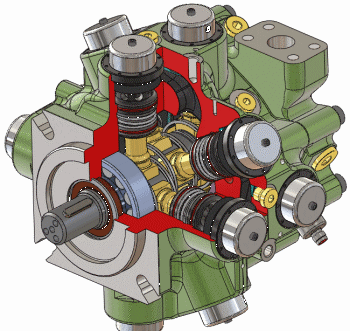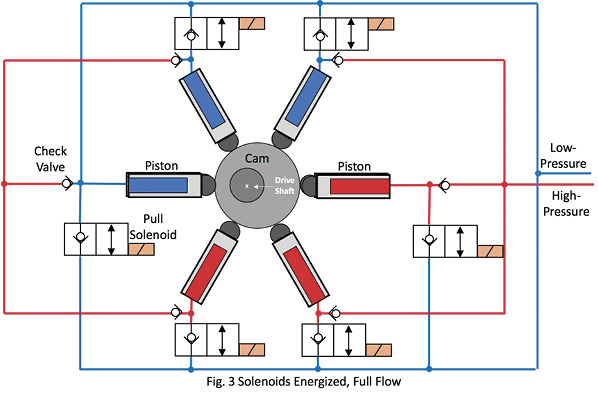Okay, I think I got it. First we need separate the "swashplate" terminologies. The picture you have is a cross section of a hydraulic wobble or "swashplate" pump. The swashplate I was referring to is a rotor flight control. No comparison. What I missed was the "digital" or electrical words in the type of hyd pump which is basically an electro-mechanical hydraulic pump where the control valves are internal and located at the head of each pump piston. However, the pump is a radial type pump with each pump piston a separate hydraulic pressure supply system. In other words its completely different than your picture and conventional hyd systems I'm familiar with. So each internal pump piston supplies pressure to each rotor motor and is independent controlled by a variable electric valve mount internally at each pump piston head assembly. Now that's a mouthful. Basically, each rotor speed is changed independently by open/close of the internal ports which in turns allows for direction control. Seems these type electro-mechanical hydraulic pumps are all the rage in the heavy equipment industry and are used on excavators, etc and have made conventional mechanical hydraulic control through spooler valves, etc. obsolete.





